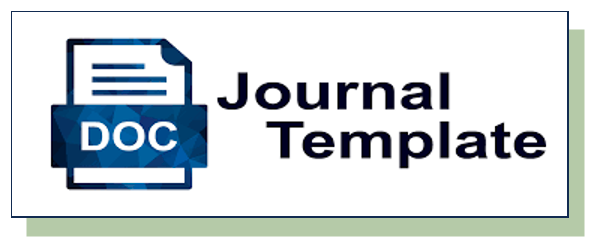Analisis Kemampuan Berfikir Kritis Siswa Sekolah Menengah Atas Pada Mata Pembelajaran Pendidikan Agama Islam
DOI:
https://doi.org/10.29240/belajea.v7i1.4339Keywords:
Islamic education, Critical thinks ability, Senior high school.Abstract
Islamic education is not only about known about God or islamic concept, but student should be able to thinkfull with agument, analyse data, and think critically. Crytical think is need a procces to solve problem, analyse problem, sub problem and think carefully with all point of view. Student should be able to upgrade their critical think skills actualy to learn islamic education. The purpose of this study is analyze and describe ability critical think students to learn islamic education in senior high school Al-Azhar Medan. Subjects in this study were students of class XI Tahfidz Private High School Al-Azhar Medan academic of 2020-2021 with 120 students as subjects. This study uses a qualitative approach to describe students' critical thinking skills based from critical thinking indicators and based on the collected quantitative data. The author measures students' critical thinking skills by using tests and interviews. Result showed that student criical thinks ability are consisted of high critical thinker categories 35,9% critical thinker categories 46,6% quite critical thinker categories 11,6% and weak critical thinker categories 5,9%. Based on data SMA Swasta Al-Azhar Medan Student’s have been able to think critially in Islamic Education.
Downloads
References
Afandi, Muslim, and Zuraidah Zuraidah. “Kesiapan, Gaya Belajar Dan Keaktifan Siswa Pada Pembelajaran Pendidikan Agama Islam Di SMPN Bangkinang Kota.†Belajea; Jurnal Pendidikan Islam 5, no. 2 (2020): 221. https://doi.org/10.29240/belajea.v5i2.1551.
Afsahi, Seyed Ehsan. “The Relationship between Mother Tongue , Age , Gender and Critical Thinking Level†4, no. 1 (2017): 116–24.
Az Zafi, Ashif, Maulida Tsalis Maroh, Siswanto Siswanto, and Irwan Fathurrochman. “Islamic Religious Education Teacher of Learning Strategy in Implementing Religious Values Through Whatsapp.†Nazhruna: Jurnal Pendidikan Islam 4, no. 3 (2021): 700–711. https://doi.org/10.31538/nzh.v4i3.1423.
Brookfield, Stephen. “Critically Reflective Practice.†Contiuing Education in the Health Professions 4, no. 18 (1998): 197. https://doi.org/10.1177/016327878400700101.
Cottrell, Stella. Critical Thinking Skills. Developing Effective Analysis and Argument. Contemporary Nurse. Vol. 25, 2007. https://doi.org/10.5172/conu.2007.25.1-2.174a.
Doris M., Niamh Merkl-Davies, and Brennan. “Journal of Applied Learning & Teaching.†The Irish Journal of Psychology 1, no. 1 (2018): 25–34.
Facione, Peter a. “Critical Thinking : What It Is and Why It Counts.†Insight Assessment, no. ISBN 13: 978-1-891557-07-1. (2011): 1–28. https://www.insightassessment.com/CT-Resources/Teaching-For-and-About-Critical-Thinking/Critical-Thinking-What-It-Is-and-Why-It-Counts/Critical-Thinking-What-It-Is-and-Why-It-Counts-PDF.
Hamka, Buya. Tafsir Al-Azhar. Cet-1. Jakarta: Gema Insani, 2015.
Hanim Rahmat, Noor, Norhartini Aripin, Nur Maizura Lin, Wararat Whanchit, and Zulaikha Khairuddin. “Exploring the Connection between Critical Thinking Skills and Academic Writing.†International Journal of Asian Social Science 10, no. 2 (2020): 118–28. https://doi.org/10.18488/journal.1.2020.102.118.128.
Kasmurie, Awg, Awg Kitot, Abdul Razak, Ahmad Sebuah, Ahmad Ali, and Seman Sebuah. “Berpikir Kritis†7, no. C (2010): 264–73.
Keeley, Stuart M., Kenneth M. Shemberg, Brenda S. Cowell, and Brian J. Zinnbauer. “Coping with Student Resistance to Critical Thinking.†College Teaching 43, no. 4 (1995): 140–45. https://doi.org/10.1080/87567555.1995.9925537.
Massa, Susanna. “The Development of Critical Thinking in Primary School: The Role of Teachers’ Beliefs.†Procedia - Social and Behavioral Sciences 141 (2014): 387–92. https://doi.org/10.1016/j.sbspro.2014.05.068.
Priyadi, Rian. “Analisis Kemampuan Berpikir Kritis Siswa SMA Kelas X Dalam Memecahkan Masalah SPLTV.†Jurnal Cendekia : Jurnal Pendidikan Matematika 5, no. 2 (2021): 909–22. https://doi.org/10.31004/cendekia.v5i2.574.
Sahrul, Kahar, Muhammad."Analisis Kemampuan Berpikir Kritis Matematis Siswa SMA Kota Sorong Terhadap Butir Soal Dengan Graded Response Model." Tadris Jurnal Keguruan dan Ilmu Tarbiyah. Vol. 2. No. 1. (2017).
Warsah, Idi, Imron Imron, Siswanto Siswanto, and Okni Aisa Mutiara Sendi. “Strategi Implementatif KKNI Dalam Pembelajaran Pendidikan Islam Di IAIN Curup.†Jurnal Tarbiyatuna 11, no. 1 (2020): 77–90. https://doi.org/10.31603/tarbiyatuna.v11i1.3442
Tarbiyatuna 11, No. 1 (2020): 77-90. https://org/10.31603/tarbiyatuna.vl lil.3442.
Tumanggor, Mike. “Universitas Pendidikan Indonesia,†2010, 1–100.
Downloads
Published
How to Cite
Issue
Section
Citation Check
License
Authors who publish with Belajea: Jurnal Pendidikan Islam agree to the following terms:- Authors retain copyright and grant the journal right of first publication with the work simultaneously licensed under a Creative Commons Attribution-NonCommercial-ShareAlike 4.0 International License (CC BY-NC-SA 4.0) that allows others to share the work with an acknowledgment of the work's authorship and initial publication in this journal.
- Authors are able to enter into separate, additional contractual arrangements for the non-exclusive distribution of the journal's published version of the work (e.g., post it to an institutional repository or publish it in a book), with an acknowledgment of its initial publication in this journal.
- Authors are permitted and encouraged to post their work online (e.g., in institutional repositories or on their website) prior to and during the submission process, as it can lead to productive exchanges, as well as earlier and greater citation of published work (See The Effect of Open Access).


 This work is licensed under a
This work is licensed under a 